Collaborative Conservation of a Socio-Ecological Production Landscape through ICT Tools
Abstract
:1. Introduction
2. Materials and Methods
2.1. Context
2.2. LINE Group Actors
2.3. Activity Content of Community Actor
2.3.1. Patrol of Illegal Fish Catching at Stream
2.3.2. Water Potential Monitoring and Damage Inspection Works
2.3.3. Cleaning and Maintenance Tasks
2.3.4. Stream Project Construction Supervision Tasks
3. Results
3.1. Statistics and Descriptive Analysis of LINE group
3.1.1. Phase and Change of Total Use Frequency
3.1.2. Community Participation Frequency Analysis
3.1.3. Participation Frequency by Individual Actors
3.1.4. Events with Higher Discussion Frequencies
3.1.5. Time Characters Using ICT Tools
Analysis of Daily Interaction Time
Analysis of Monthly Interaction Time
3.2. Findings of Interviews
3.2.1. LINE is an Effective Tool for Providing Interactive Supports for Community Actors
If there are illegal behaviors during patrol, you should ticket them. You may fail to do that yourself and you may find it inconvenient to call and contact others. You can use Line and everyone can see your message, and those who have time can just come and help.(K10)
3.2.2. Efficiency Improvements of Communication and Discussion among Patrols
LINE is more efficient than Facebook which is limited by time.(K10)
It’s equipped with real-time feature, we can be there as soon as possible if there are risks when we try to persuade others. At least we can get a sense of safety.(K10)
3.2.3. Assisting in Patrol with Image Transfer
We are all posting pictures as we are on duty.(K10)
3.2.4. Shortening the Gaps between BRCW and Public Sectors
The most important thing is, DG1 of AEDS in District Office is so earnest that he arrives at the scene when we call him on Line, which contributes greatly to the patrol duties.(K10)
In our opinion, we are ready to head to the scene upon receipt of his message and then conduct interview records with the alleged offender. The prepared interview record will be sent to Agricultural Bureau as a basis of whether to fine the offender.(DG1)
3.2.5. Barriers of Using LINE
There were many barriers (when I started using phone and LINE), such as typing, photo sending and being afraid of pressing the wrong buttons or delivering the wrong meanings.(F7)
3.2.6. Impacts of Using LINE
4. Discussions
5. Conclusions
Acknowledgments
Author Contributions
Conflicts of Interest
References
- Hashimoto, S.; Koriki, C.; Nakamura, S.; Hoshino, S.; Shimizu, N. Hotspots mapping of the social-ecological production landscapes of the Noto Peninsula. Landsc. Res. Jpn. Online 2015, 8, 31–36. [Google Scholar] [CrossRef]
- Gu, H.; Subramanian, S.M. Driver of changes in socio-ecological production landscape: Implications for better management. Ecol. Soc. 2014, 19, 41. [Google Scholar] [CrossRef]
- Suzuki, K.; Dublin, D.; Tsuji, N.; Osaki, M. Evaluation of SATOYAMA—Human and nature coexistence system-in applying Satoyama Agricultural Development Tool (SADT) and Happiness Survey in Sabah State, Malaysia. Int. J. Environ. Biodivers. 2015, 6, 1–11. [Google Scholar]
- Ichikawa, K. Understanding Socio-Ecological Production Landscapes in the Context of Cambodia. Int. J. Environ. Rural Dev. 2013, 4, 57–60. [Google Scholar]
- Environmental Protection Agency (EPA) Eco Life Website. Available online: https://ecolife.epa.gov.tw/ (accessed on 4 September 2017). (In Chinese)
- Soil and Water Conservation Bureau (SWCB), Council of Agriculture (COA) Rural regeneration policy. Available online: https://www.swcb.gov.tw/content/index.asp?m1=4&m2=467&gp=18 (accessed on 4 September 2017). (In Chinese)
- International Partnership for the Satoyama Initiative (IPSI) Website: Case Studies. Available online: http://satoyama-initiative.org/casestudies/ (accessed on 4 September 2017).
- Mostert, E.; Pahl-Wostl, C.; Rees, Y.; Searle, B.; Tàbara, D.; Tippett, J. Social learning in European river-basin management: Barriers and fostering mechanisms from 10 river basin. Ecol. Soc. 2007, 12, 19. [Google Scholar] [CrossRef]
- Craps, M. Social Learning in River Basin Management, HarmoniCOP WP2 Reference Document. Available online: http://www.harmonicop.uni-osnabrueck.de/_files/_down/SocialLearning.pdf (accessed on 14 July 2017).
- Onitsuka, K.; Hoshino, S. The potential of restructuring rural communities through utilization of SNS: Based on the activities and results of SCOPE project supported by MIC. J. Rural Plan. Assoc. 2015, 33, 45–48. [Google Scholar] [CrossRef]
- Pahl-Wostl, C. The implication of complexity for integrated resources management. Environ. Model. Softw. 2007, 22, 561–569. [Google Scholar] [CrossRef]
- Kilpeläinen, A.; Seppänen, M. Information technology and everyday life in ageing rural villages. J. Rural Stud. 2014, 33, 1–8. [Google Scholar] [CrossRef]
- Park, S. Digital inequalities in rural Australia: A double jeopardy of remoteness and social exclusion. J. Rural Stud. 2016, in press. 1–9. [Google Scholar] [CrossRef]
- Stern, M.J.; Adams, A.E. Do rural residents really use the internet to build social capital? An empirical investigation. Am. Behav. Sci. 2010, 53, 1389–1422. [Google Scholar] [CrossRef]
- Pew Research Center’s Global Attitudes Spring 2015 Survey. Available online: http://www.pewglobal.org/2015/06/23/spring-2015-survey/ (accessed on 23 June 2015).
- Ministry of Internal Affairs and Communication, Japan (MIC). White Paper 2015, Information and Communications in Japan, Chapter 2; MIC: Tokyo, Japan, 2015.
- Heimerl, K.; Menon, A.; Hasan, S.; Ali, K.; Brewer, E.; Parikh, T. Analysis of smartphone adoption and usage in a rural community cellular network. In Proceedings of the Seventh International Conference on Information and Communication Technologies and Development, Singapore, May 2015. [Google Scholar]
- Brannen, J. Mixing Methods: The Entry of Qualitative and Quantitative Approaches into the Research Process. Int. J. Soc. Res. Methodol. 2005, 8, 173–184. [Google Scholar] [CrossRef]
- Nakatsuka, M. Development and effects of SNS for community development in rural areas. J. Rural Probl. 2007, 47, 220–226. [Google Scholar] [CrossRef]
- Goto, K.; Niinuma, K. A study on urban and rural interaction by internet. Trans. Rural Plan. 2001, 20, 215–220. [Google Scholar] [CrossRef]
- Coleman, J.S. Social capital in the creation of human capital. Am. J. Soc. 1988, 94, S95–S120. [Google Scholar] [CrossRef]
- Putnam, R.D.; Leonardi, R.; Nonetti, R.Y. Making Democracy Work: Civic Traditions in Modern Italy; Princeton University Press: Princeton, NJ, USA, 1993. [Google Scholar]
- Putnam, R.D. Bowling alone: America’s declining social capital. J. Democracy 1995, 6, 65–78. [Google Scholar] [CrossRef]
- Portes, A. Downsides of social capital. Proc. Natl. Acad. Sci. U.S.A. 2014, 111, 18407–18408. [Google Scholar] [CrossRef] [PubMed]
- Brown, D.L.; Schafft, K.A. Rural People and Communities in the 21st Century: Resilience and Transformation; Polity Press: Cambridge, UK, 2011. [Google Scholar]
- Flora, C.B.; Flora, J.L.; Gasteyer, S.P. Rural Communities: Legacy+Change; Westview Press: Boulder, CO, USA, 2015. [Google Scholar]
- Borgatti, S.P.; Jones, C.; Everett, M.G. Network measures of social capital. Connections 1998, 21, 27–36. [Google Scholar]
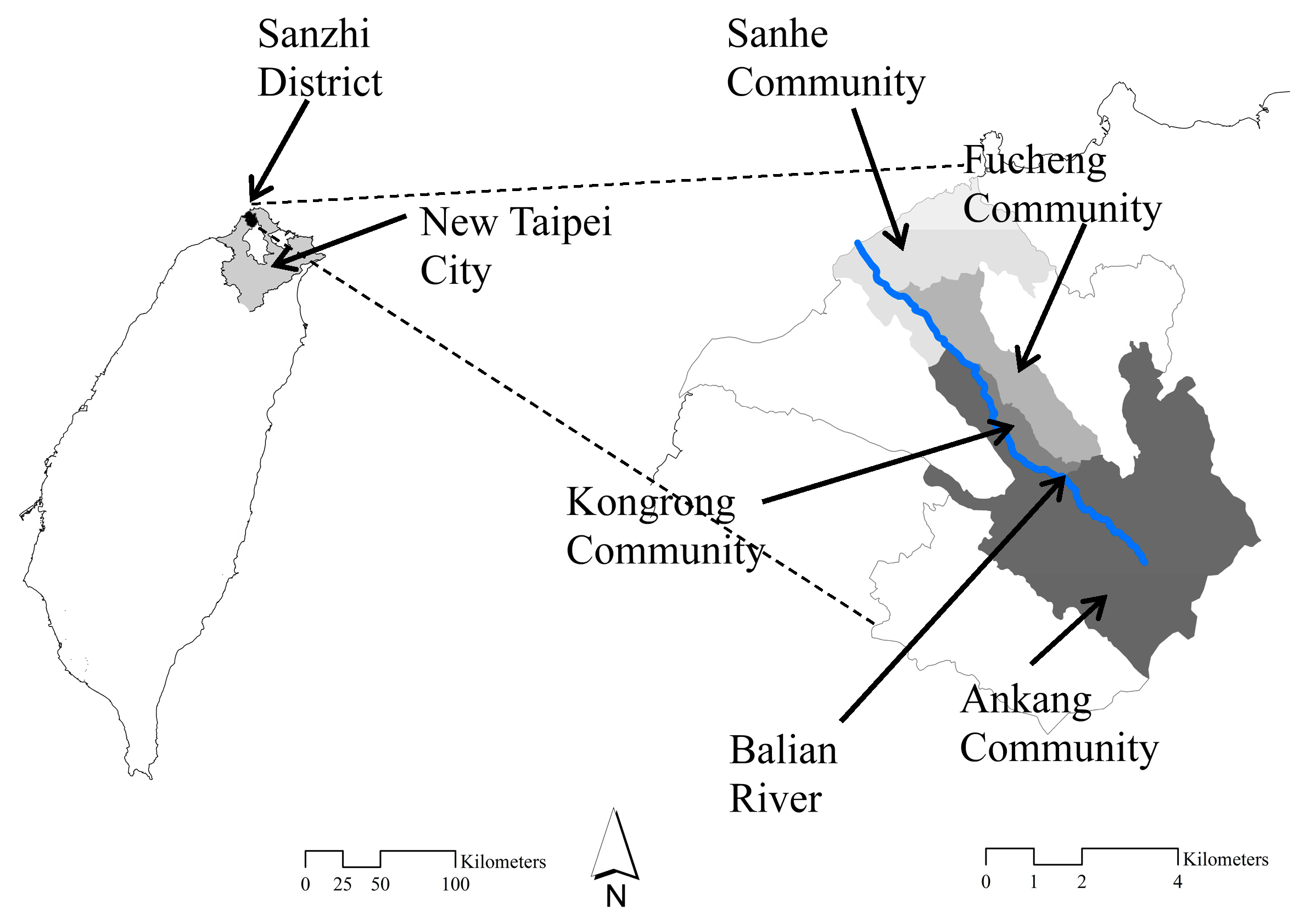
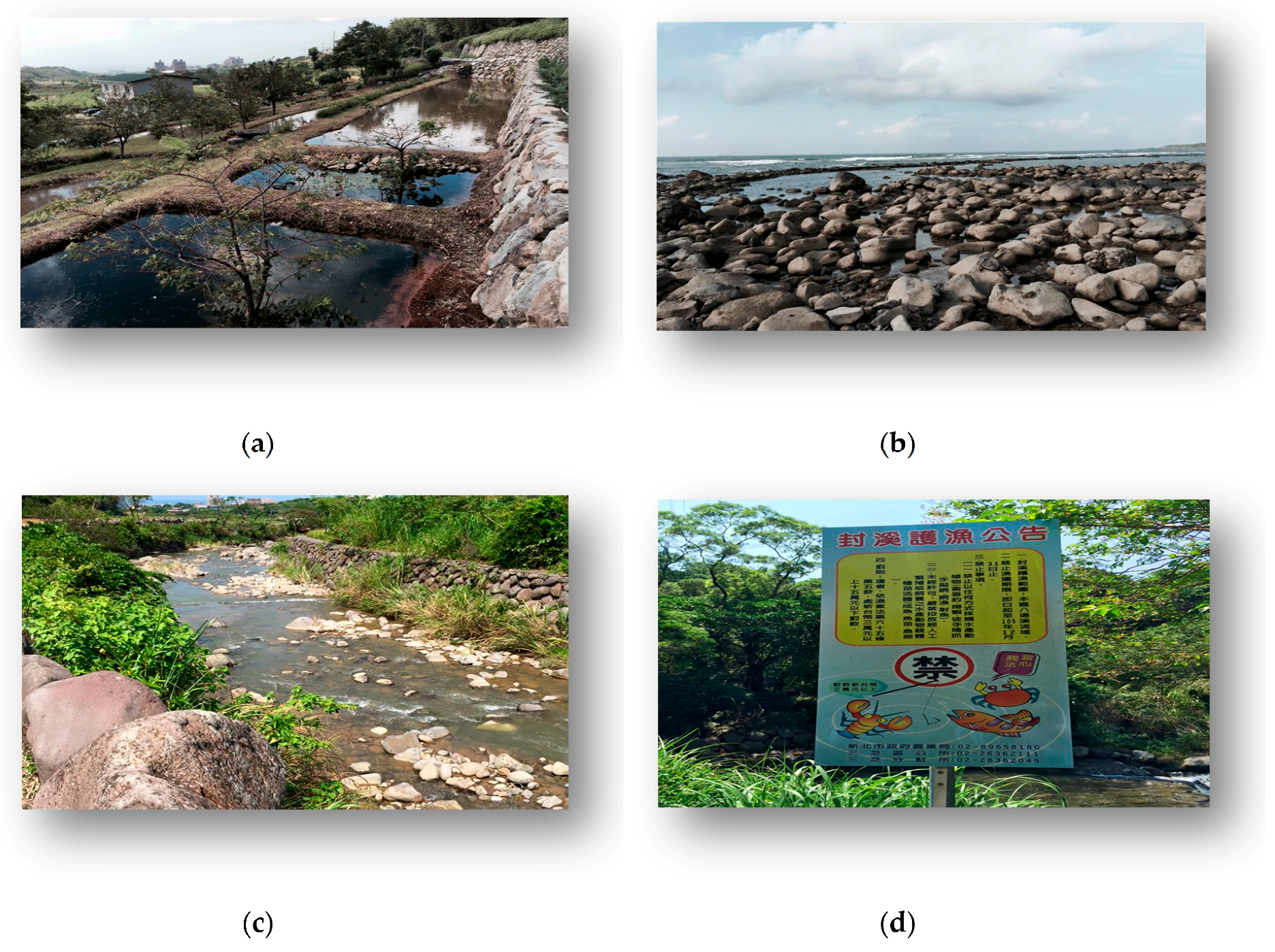
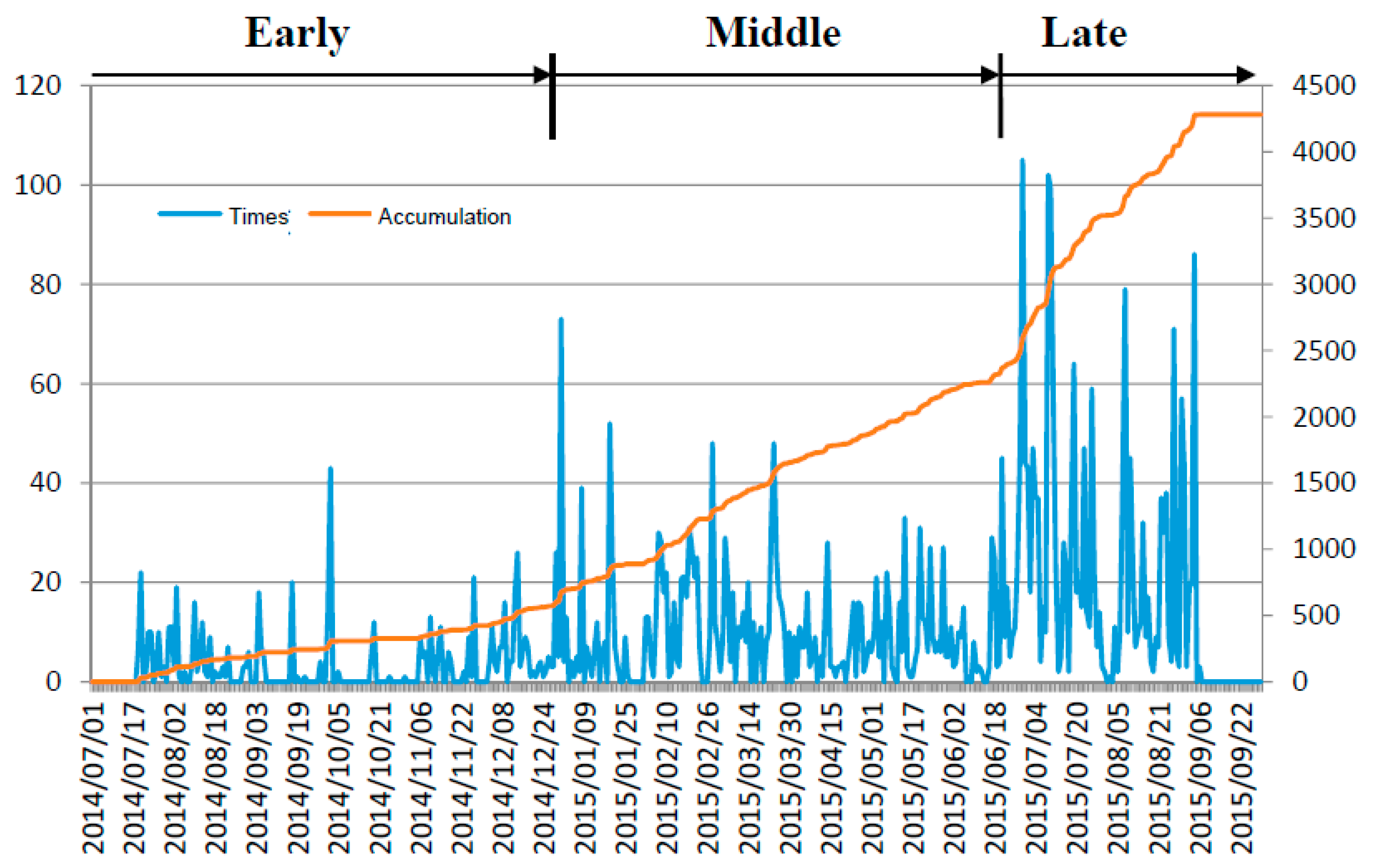
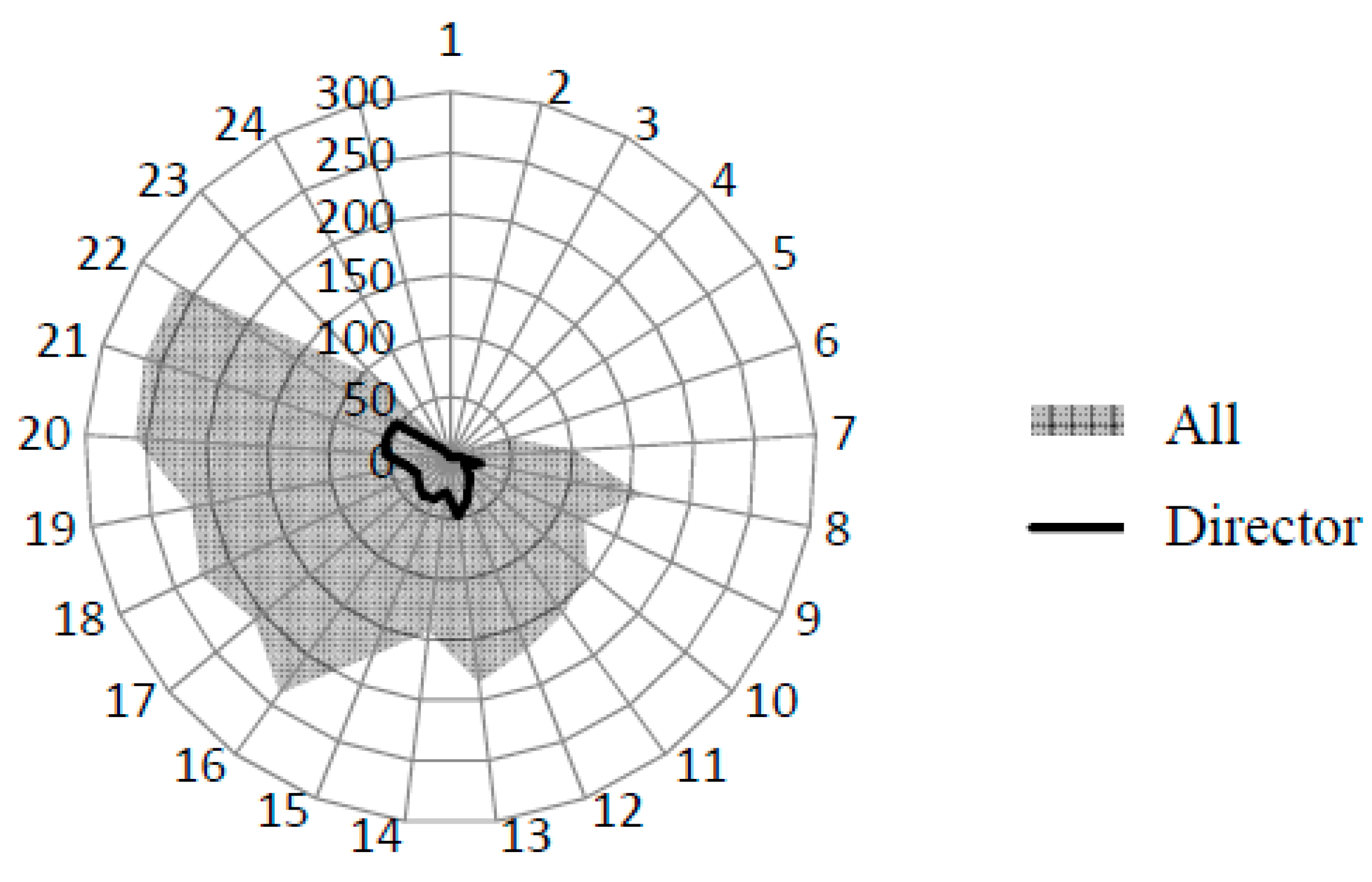
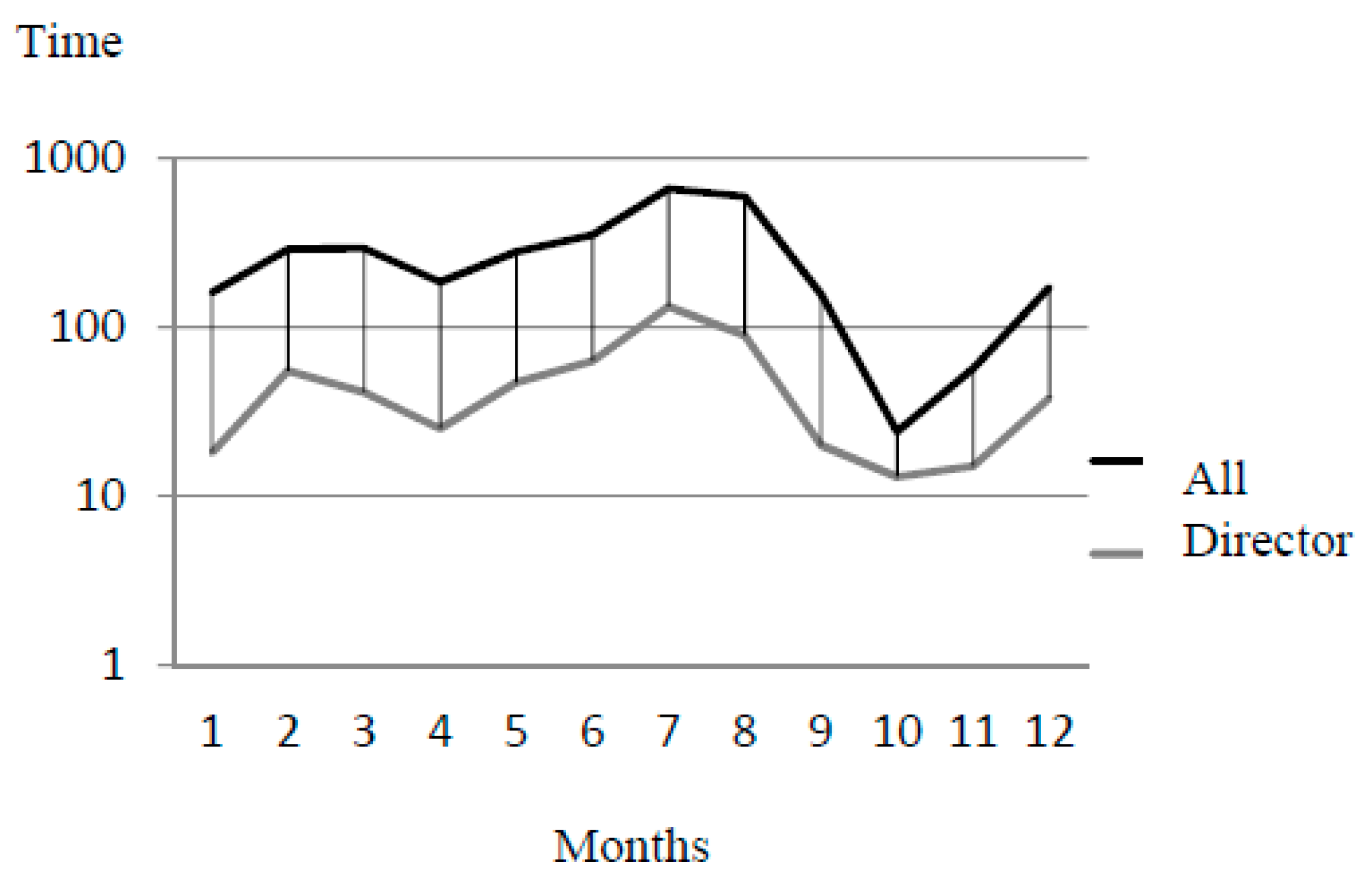
| Name | Ankang Community | Kongrong Community | Fucheng Community | Sanhe Community |
|---|---|---|---|---|
| Area (Hectare) | 1520 | 210 | 603 | 754 |
| Population (People) | 1545 | 425 | 13,006 | 2140 |
| Households | 552 | 89 | 5071 | 820 |
| Urban Planning Area Included | No | No | Yes | Yes |
| Number of people from each community for BRCW | 9 | 9 | 7 | 9 |
| No. | Date | Location | Interview Unit | Position | Personnel Code |
|---|---|---|---|---|---|
| 1 | 8 March | Fucheng Community Office | BRCW | Executive Secretary | F2 |
| 2 | 14 March | Self-Residence | BRCW | Director | F1 |
| 3 | 24 March | Sanzhi District Office | AEDS, Sanzhi District Office | Chief | DG3 |
| 4 | 21 March | Sanzhi District Offfice | AEDS, Sanzhi District Office | Officer | DG1 |
| 5 | 21 March | Fucheng Community Office | BRCW Kongrong Community | Leader | K1 |
| 6 | 21 March | Fucheng Community Office | BRCW Ankang Community | Leader | A2 |
| 7 | 30 March | Self-Residence | BRCW Fucheng Community | Leader | F7 |
| 8 | 20 April | Kongrong Community | BRCW | Staff | K10 |
| 9 | 22 April | Fucheng Community Office | BRCW Sanhe Community | Leader | S3 |
| Ankang Community | Kongrong Community | Fucehng Community | Sanhe Community | Sanzhi District Office |
|---|---|---|---|---|
| A1 | K1 (Leader) | F1 (Director) | S1 | DG1 (Officer) |
| A2 (Leader) | K2 | F2 (Executive Secretary) | S2 | DG2 (Previous Officer) |
| A3 | K3 | F3 | S3 (Leader) | DG3 (Officer of AEDS) |
| A4 | K4 | F4 | S4 | |
| A5 | K5 | F5 | S5 | |
| K6 | F6 | S6 | ||
| K7 | F7 (Leader) | |||
| K8 | ||||
| K9 |
| Participation Condition | Ankang Community | Kongrong Community | Fucheng Community | Sanhe Community | Sanzhi District Office |
| Active | F1 (560) | S1 (231) | DG1 (319) | ||
| F2 (317) | DG2 (202) | ||||
| F3 (215) | |||||
| Slightly Active | A1 (147) | K1 (114) | F4 (162) | S2 (155) | |
| A2 (118) | S3 (106) | ||||
| Slightly Passive | A3 (95) | K2 (76) | F5 (78) | S4 (50) | DG3 (29) |
| A4(34) | K3 (33) | F6 (41) | |||
| F7 (33) | |||||
| Passive | A5 (8) | K4 (18) | S5 (10) | ||
| K5 (15) | |||||
| K6 (14) | S6 (4) | ||||
| K7 (10) | |||||
| K8 (9) | |||||
| K9 (8) | |||||
| Total | 402 | 279 | 1423 | 556 | 551 |
| Date | Messages (Sum of Pictures or Videos) | Actor | Abstract of Event Content |
|---|---|---|---|
| 4 September 2015 | 74 (5) | 12 | Executive Secretary and Director initiate willingness to resign due to their incapability to hamper the project, and team members encourages them along with dissuasion from resignation. |
| 10 July 2015 | 64 (14) | 17 | Stream water potential report at typhoon |
| 27 August 2015 | 64 (7) | 11 | Loss inspection after typhoon (road signs), stream condition patrol report, inquiry to district office on project contractors performing constructions near Balian River. |
| 8 August 2015 | 56 (8) | 9 | Cancellation of patrol activity due to excessive wind and rainfall, and cautions |
| 29 June 2015 | 53 (16) | 12 | Demonstration activity pictures on Day 2, illegal catching and angling event report |
| 19 July 2015 | 53 (4) | 9 | Illegal catching and angling, report on civilians catching and angling event report to Police-Civilian Disputes |
| 30 August 2015 | 53 (4) | 9 | Members of the BRCW march to District Office for protest based on their grudge over Water Resource Agency district office on project contractors. The protest is ended by promises of suspension, followed by info-meeting on project commencement, by staffs of Agriculture Bureau. |
| 9 July 2015 | 51 (9) | 14 | Stream water potential report before striking of typhoon |
| 28 June 2015 | 41 (7) | 10 | Demonstration activity pictures on Day 1, advice to civilians on fishing prohibition. |
| 26 July 2015 | 40 (5) | 12 | Illegal catching and angling event report |
| 30 June 2015 | 38 (4) | 12 | Discussions on illegal catching and angling event occurred on the previous day, advice to civilians on fishing prohibition. |
| 19 January 2015 | 37 (6) | 10 | Illegal catching and angling event, discussions on projects beside the river. |
| 11 July 2015 | 37 (3) | 11 | Stream water potential report after typhoon, discussions on the number of patrol at downstream area on its scarcity. |
| 22 August 2015 | 37 (2) | 10 | Illegal catching and angling event report |
| 24 August 2015 | 36 (0) | 6 | Inquiries to District Office on Balian River District Office on nt report.n, discussions on the number of patrol at downstream area on its scarcity |
| 10 August 2015 | 35 (0) | 11 | Pictures of drastic increase of river level incurred by typhoon and damage patrol report |
| 24 March 2015 | 34 (6) | 13 | Reports on new recruits, reports on heightened river level, meeting notice, discussions on possibilities of making flexible uses of Balian River small dam construction |
| 21 June 2015 | 33 (4) | 7 | Director1verew recruits, reports on heightened river level Balian River, water resource ratio for Balian River and fields should be adjusted, opinions of water resource conservation performed by Water Resource Agency |
| 23 July 2015 | 33 (9) | 14 | Stream condition patrol report |
| 4 July 2015 | 32 (3) | 9 | Activity affairs communication, advice to civilians on fishing prohibition |
| 20 May 2015 | 31 (2) | 11 | Reports on rainfall, flow and turbidity of river water at striking of front, report on staff change in District Office. |
© 2017 by the authors. Licensee MDPI, Basel, Switzerland. This article is an open access article distributed under the terms and conditions of the Creative Commons Attribution (CC BY) license (http://creativecommons.org/licenses/by/4.0/).
Share and Cite
Peng, L.-P.; Wang, C.-J.; Onitsuka, K. Collaborative Conservation of a Socio-Ecological Production Landscape through ICT Tools. Environments 2017, 4, 63. https://doi.org/10.3390/environments4030063
Peng L-P, Wang C-J, Onitsuka K. Collaborative Conservation of a Socio-Ecological Production Landscape through ICT Tools. Environments. 2017; 4(3):63. https://doi.org/10.3390/environments4030063
Chicago/Turabian StylePeng, Li-Pei, Chung-Jung Wang, and Kenichiro Onitsuka. 2017. "Collaborative Conservation of a Socio-Ecological Production Landscape through ICT Tools" Environments 4, no. 3: 63. https://doi.org/10.3390/environments4030063
APA StylePeng, L.-P., Wang, C.-J., & Onitsuka, K. (2017). Collaborative Conservation of a Socio-Ecological Production Landscape through ICT Tools. Environments, 4(3), 63. https://doi.org/10.3390/environments4030063






